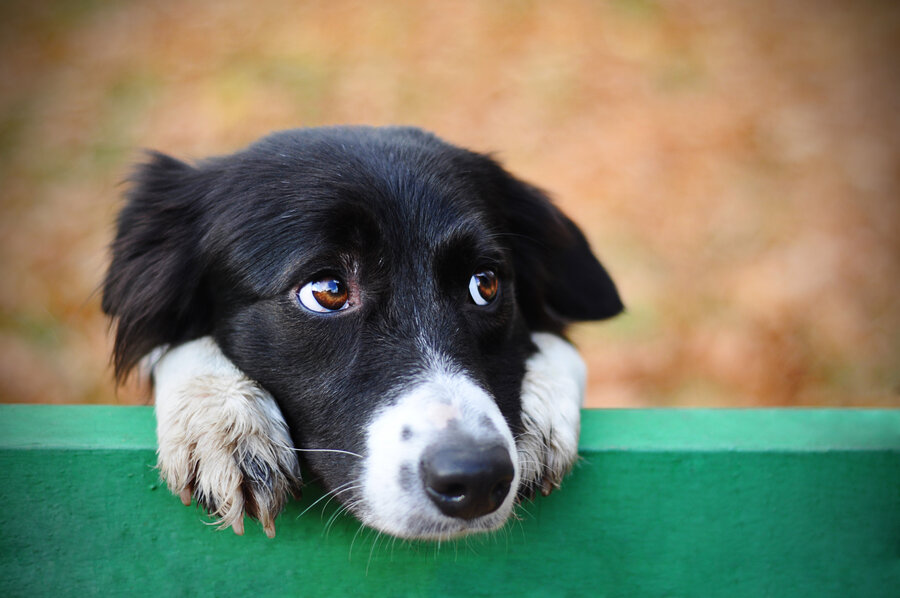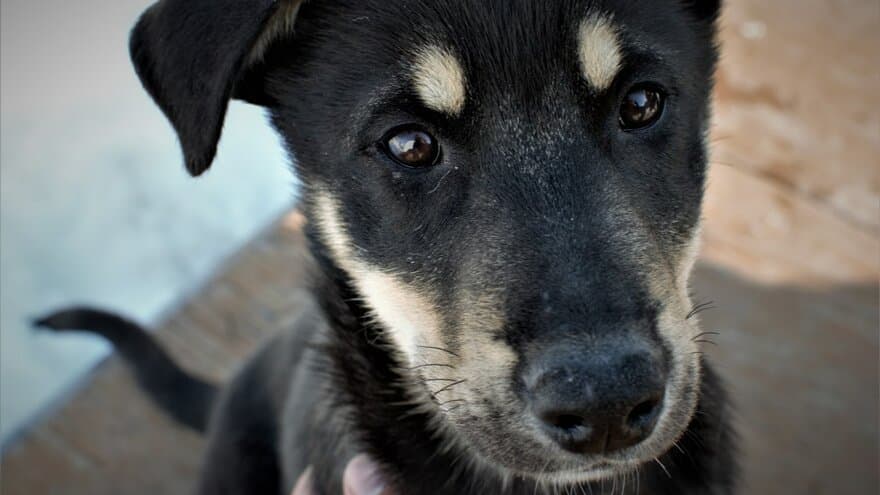The Norwegian Veterinary InstituteNMBU The Faculty of Veterinary MedicineAgria and SKK Research Fund for PetsAstri and Birger Torsted's Foundation in favor of the animals
Background
In the autumn of 2019, an increase in cases of acute hemorrhagic diarrhea syndrome (AHDS) in dogs in southeastern Norway was observed, and 42 dogs died without known predisposing factors. Extensive media coverage of "the unknown dog disease" showed that many people are concerned about the health of their dogs and expect veterinary professionals to work to understand the cause(s) of these cases.
A wide range of infectious agents, in addition to poisoning, were excluded based on clinical and pathological findings, microbiological examinations and molecular diagnostics. The bacterium Providencia (P.) alcalifaciens was isolated from about 60% of all fecal samples collected and from 75% of autopsied dogs - an unusually high incidence. In most cases, P. alcalifaciens was found together with Clostridium (C.) perfringens. To investigate the underlying causes of the AHDS outbreak, and in particular possible roles for P. alcalifaciens and C. perfringens, a major collaboration was initiated between the paraclinical and clinical institutes at NMBU and the Veterinary Institute.
Acute haemorrhagic diarrhea in dogs is a commonly observed syndrome of unknown etiology. A preliminary diagnosis of "acute hemorrhagic diarrhea syndrome" (AHDS) can be made by ruling out known causes of hemorrhagic diarrhea. During the outbreak of AHDS in the autumn of 2019, the only specific finding was a high incidence of an unusual bacterium, P. alcalifaciens (62%), often in co-occurrence with the common bacterium C. perfringens (36.9%) (Haaland et al., 2020).
Objective
P. alcalifaciens is known to cause foodborne outbreaks of gastrointestinal diseases in humans (Murata et al., 2001; Chlibek et al. 2002; Shah et al. 2014; Shima et al., 2017) and pneumonia in piglets (Wang et al., 2014). It has also been associated with diarrhea in children (Albert et al., 1989; Urbina et al. 2003), and travelers' diarrhea (Haynes og Hawkey, 1989). Furthermore, P. alcalifaciens has been discussed as a cause of enteritis in dogs (Mohr, 2002; Tribe og Rood, 2002; Krol et al. 2007), but this association is controversial. The possible role of the bacterium in diarrhea in dogs in Norway was described for the first time in 2005, when two bioengineering students wrote a bachelor's thesis under the supervision of Parafag's Head of Department Trine L’Abée-Lund (Fauske og Næve, 2006). There are large knowledge gaps in our understanding of the possible role of P. alcalifaciens as a causative agent of AHDS. There is a lack of knowledge about possible virulence properties and pathogenesis, interaction with other bacteria and not least epidemiology. In this project, we use different approaches to gain insight into this bacterium as a primary pathogen, including whole genome sequencing, cell line infection models and metagenomics.
C. perfringens is part of the normal intestinal microbiota of humans and animals and can also be found widely in the environment, and the bacterium is a common finding in dogs with AHDS (Unterer et al., 2014). While disease caused by C. perfringens is generally thought to be of a less severe degree (Marks og Kather, 2006), strains expressing the enterotoxins NetE / NetF have been associated with severe AHDS (Gohari et al. 2015; Sindern et al., 2019). The results from the first study of the outbreak in 2019 did not indicate a major role for NetE / NetF strains (Jørgensen et al., 2021). Now we are working on an in-depth analysis of the outbreak strains of C. perfringens using toxin typing and sequencing of the entire genome. In addition, we will study interactions between C. perfringens and P. alcalifaciens in co-infection.
All infection studies carried out as part of PhD and research line projects use in vitro models in line with the principles for replacement, reduction and improvement of animal experiments.
Our clinical knowledge about acute hemorrhagic diarrhea syndrome (AHDS) and P. alcalifaciens is poor, and there is a need for robust data on treatment options, long-term prognosis and causal relationships.
Funding
Research on small animal diseases is unfortunately poorly funded due to a lack of external funding sources. We are incredibly grateful to those who support our research on AHDS.
• The Faculty of Veterinary Medicine, NMBU, supports a PhD and two research track projects and the Bacteriology and Mycology Unit, Department of Paraclinical Sciences, supported sequencing of P. alcalifaciens isolates from 2005, 2006 and 2019.
• The Norwegian Veterinary Institute supported a master's project (now completed) and sequencing of outbreak isolates.
• Agria and SKK Research Fund for Pets project N2020-0023.
• Astri and Birger Torsted's Foundation in favor of the animals 2021-2022.
Participants
Anja Maria Aardal
Research Track Student
"Forekomsten av Providencia alcalifaciens hos friske og syke dyr; en tverrstudie og en langsiktig kohort"
Helene Kristine Karlsen
Research Track Student
"Clostridium perfringens rolle i akutt hemorrhagisk diare hos hund"

Anita Haug Haaland
Former Associate Professor.
Supervisor for the student thesis on "Utbrudd av akutt hemoragisk diarésyndrom hos hund høsten 2019; en sammenligning av klinisk presentasjon og behandling ved NMBU Smådyrklinikken og Evidensia Oslo Dyresykehus"
Trine Marie L'Abée-Lund
Former Associate Professor and Head of department
Supervisor bachelor thesis "Kan Providencia alcalifaciens være en primærpatogen bakterie ved diaré hos hund?" (2006)
Aud Kari Fauske
Former Head Engineer.
Author of the bachelor thesis "Kan Providencia alcalifaciens være en primærpatogen bakterie ved diaré hos hund?" (2006)
External Participants
Norwegian Veterinary Institute: Hannah Jørgensen, Camilla Sekse, Gunnar Sundstol, Anita Solhaug, Karin Lagesen, Hilde Nygård (Masterstudent VI/NMBU)
University of Basel, Department of Bioscience, Switzerland: Lisandra Aguilar Bultet
Waltham Petcare Science, Great Britain: Anne Marie Bakke, Michelle Farquhar, Greg Amos
University College Dublin, Ireland: Kristin Marie Valand Herstad (previously affiliated to NMBU)
University of Oslo: Eric de Muinck, Pål Trosvik
Publications
Defining a metagenomic threshold for detecting low abundances of Providencia alcalifaciens in canine faecal samples
Anja Maria Aardal et. al.
2024
Closed Genome Sequences of Providencia alcalifaciens Isolates from Dogs
Haverkmap et al.
2022
An Official Outbreak Investigation of Acute Haemorrhagic Diarrhoea in Dogs in Norway Points to Providencia alcalifaciens as a Likely Cause
Jørgensen et. al.
2021
Changes in the fecal microbiota in dogs with acute hemorrhagic diarrhea during an outbreak in Norway
Herstad et. al.
2021
Utbrudd av akutt hemoragisk diarésyndrom hos hund høsten 2019; en sammenligning av klinisk presentasjon og behandling ved NMBU Smådyrklinikken og Evidensia Oslo Dyresykehus
Mia Lunder Krogen og Julie Robbestad
2021
Published Conference Proceeding (ISCAID.O-4 p. 56) Haaland et. al.22. Sep. 2020
Haaland et. al.
21 Sept 2020
News - in Norwegian

The Veterinary Institute 20.11.21
The 2019 outbreak of bloody diarrhea in dogs has now been published
